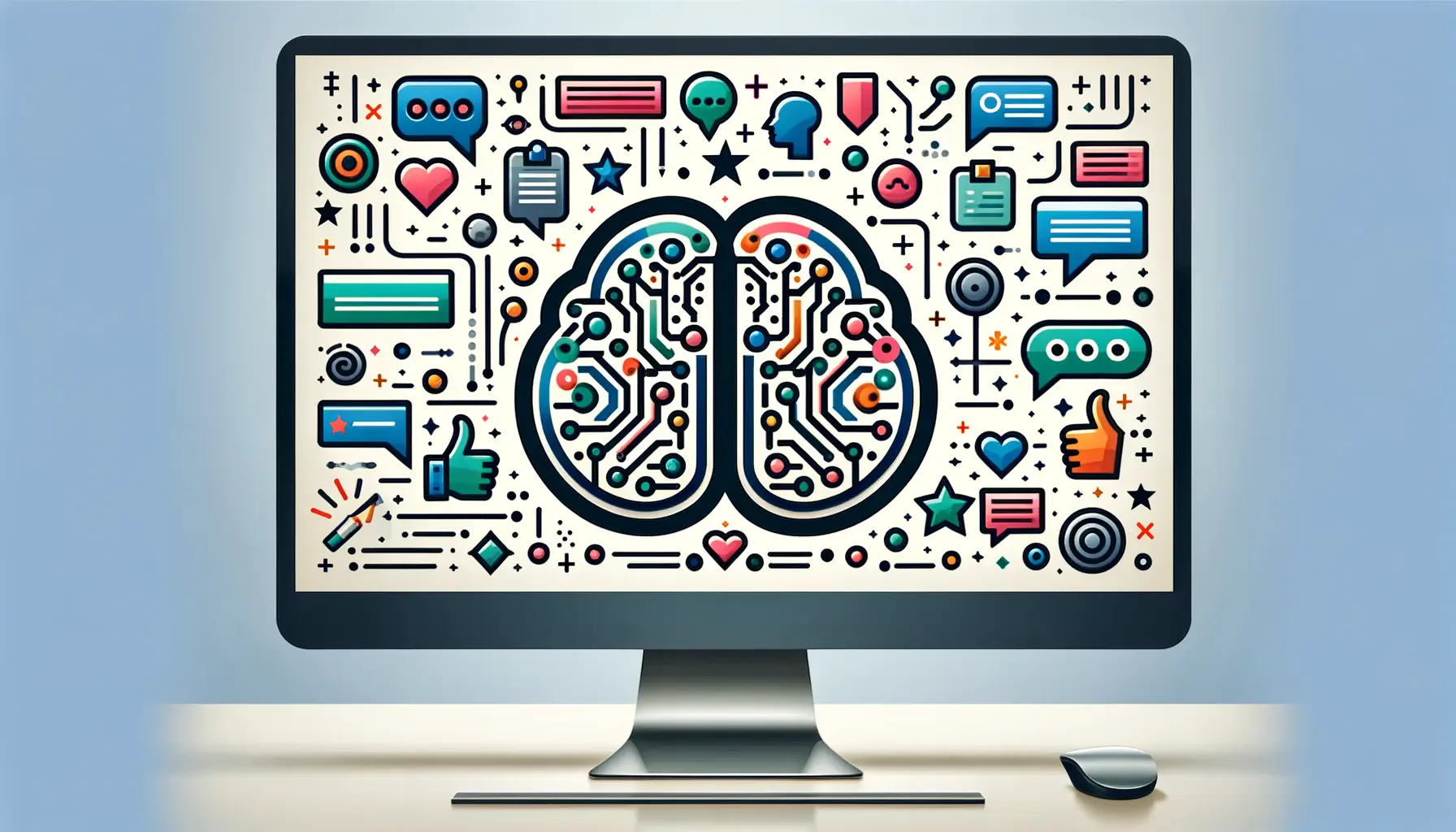The evolution of artificial intelligence, particularly in the realm of natural language processing, has been nothing short of revolutionary.
Among the vanguards of this technological advancement is ChatGPT 4, a model that has garnered attention for its ability to understand and generate human-like text based on the input it receives.
The significance of feedback in this context cannot be overstated, as it serves as the cornerstone for the continuous improvement and refinement of this AI model.
This article delves into the intricate relationship between ChatGPT 4 and user feedback, exploring how the latter shapes the evolution of this cutting-edge technology.
User feedback plays a pivotal role in the development cycle of ChatGPT 4, offering insights that are critical for enhancing its performance, accuracy, and user experience.
By analyzing and incorporating feedback, developers can identify areas of improvement, address user concerns, and introduce new features that align with the expectations and needs of its user base.
This process of iterative improvement ensures that ChatGPT 4 remains at the forefront of AI technology, capable of delivering more refined, accurate, and contextually relevant responses.
- Understanding the Impact of Feedback on ChatGPT 4
- Feedback Mechanisms in ChatGPT 4
- Challenges in Utilizing Feedback for AI Improvement
- Technological Innovations Facilitating Feedback Integration
- Real-World Applications and Success Stories
- Future Directions for ChatGPT 4 and User Feedback
- Embracing the Future: The Role of Feedback in Shaping ChatGPT 4
- ChatGPT 4 Feedback: Frequently Asked Questions
Understanding the Impact of Feedback on ChatGPT 4
The relationship between ChatGPT 4 and user feedback is symbiotic, with each element influencing the other in significant ways.
Feedback from users is not just a tool for identifying bugs or shortcomings; it is a vital source of data that informs the ongoing development and optimization of the AI model.
This section explores the multifaceted impact of user feedback on ChatGPT 4, highlighting how it contributes to the model’s evolution.
The Role of Feedback in Model Training
One of the primary ways feedback influences ChatGPT 4 is through its integration into the model’s training process.
Developers use feedback to fine-tune the model’s algorithms, ensuring that it learns from its interactions and becomes more adept at understanding and responding to user queries.
This continuous learning process is essential for maintaining the relevance and effectiveness of ChatGPT 4, as it adapts to new information, trends, and user expectations.
Moreover, feedback helps in identifying biases and errors in the model’s responses, allowing developers to make necessary adjustments.
By addressing these issues, ChatGPT 4 becomes more inclusive and accurate, reflecting a broader range of perspectives and reducing the likelihood of generating inappropriate or biased content.
Enhancing User Experience through Feedback
Feedback also plays a crucial role in enhancing the user experience.
By analyzing user interactions and feedback, developers can gain insights into how people use ChatGPT 4, what features they find most valuable, and where they encounter difficulties.
This information is invaluable for designing a more intuitive and user-friendly interface, improving the overall usability of ChatGPT 4.
Additionally, user feedback can reveal new use cases and functionalities that may not have been initially considered by the developers.
Incorporating these insights can lead to the introduction of innovative features and capabilities, further expanding the versatility and applicability of ChatGPT 4 across different domains and industries.
The iterative cycle of receiving, analyzing, and integrating feedback into ChatGPT 4’s development underscores the model’s commitment to improvement and user satisfaction. This process not only enhances the model’s performance but also ensures that it evolves in alignment with the needs and expectations of its users.
Feedback Mechanisms in ChatGPT 4
For ChatGPT 4 to evolve based on user input, effective feedback mechanisms are crucial.
These mechanisms not only facilitate the collection of feedback but also ensure that the information gathered is actionable and relevant.
This part of the article examines the various feedback mechanisms employed by ChatGPT 4 and how they contribute to its continuous improvement.
Direct User Feedback Collection
Direct feedback collection is perhaps the most straightforward mechanism, allowing users to report errors, suggest improvements, or express their satisfaction with the AI.
This can take the form of in-app feedback buttons, surveys, or direct communication channels like email or social media.
Such direct lines of communication enable developers to gather qualitative insights into the user experience, identifying specific areas where the AI excels or falls short.
- User Surveys: Periodic surveys can capture user satisfaction, usability issues, and suggestions for new features, providing a structured way to collect feedback.
- Feedback Buttons: Simple feedback buttons within the ChatGPT interface allow users to quickly indicate whether a response was helpful or not, offering immediate feedback on specific interactions.
Indirect Feedback Analysis
Beyond direct user reports, indirect feedback mechanisms play a vital role in understanding user needs and preferences.
This includes analyzing usage patterns, response ratings, and engagement metrics to infer areas for improvement.
Machine learning algorithms can process this vast amount of data to identify trends, common issues, and user behavior patterns, offering insights that might not be captured through direct feedback alone.
- Engagement Metrics: Analysis of how users interact with ChatGPT 4, such as the frequency of use, session lengths, and types of queries, helps understand user engagement and areas of interest.
- Response Ratings: Collecting ratings on the AI’s responses provides quantitative data on its performance, helping to pinpoint areas where the model’s accuracy or relevance can be improved.
Community Forums and Developer Feedback
Community forums and developer platforms offer a space for more technical feedback and discussions.
These platforms enable users to share detailed feedback, bug reports, and innovative uses of ChatGPT 4, fostering a collaborative environment for improvement.
Developers can leverage this feedback to address technical challenges, incorporate new features, and better understand the diverse needs of their user base.
- Developer Forums: Platforms where developers can discuss issues, share solutions, and propose enhancements for ChatGPT 4, enriching its development with a wide range of technical insights.
- User Communities: Online communities where users share tips, tricks, and feedback on their experiences with ChatGPT 4, providing valuable user-generated content that can inform future updates.
Incorporating a variety of feedback mechanisms ensures that ChatGPT 4’s development is informed by a broad spectrum of user experiences and technical insights, making it a more robust and user-centric AI model.
Challenges in Utilizing Feedback for AI Improvement
While feedback is invaluable for the enhancement of ChatGPT 4, utilizing this input effectively presents several challenges.
These obstacles range from the technical difficulties of integrating feedback into AI models to ensuring the feedback collected is representative and unbiased.
This part explores the complexities involved in refining ChatGPT 4 with user feedback and the strategies employed to overcome these hurdles.
Filtering and Prioritizing Feedback
One of the primary challenges is the sheer volume and diversity of feedback.
Users from various backgrounds and with different use cases contribute a wide array of suggestions, complaints, and observations.
Sorting through this feedback to identify the most valuable insights requires sophisticated filtering mechanisms and criteria for prioritizing changes that will have the most significant impact on the user experience.
- Automated Filtering: Leveraging machine learning algorithms to categorize and prioritize feedback based on its content, urgency, and potential impact on the AI’s performance.
- User Segmentation: Analyzing feedback within the context of specific user segments to ensure that improvements cater to the needs of diverse user groups.
Addressing Bias and Representativeness
Another challenge is ensuring that the feedback collected is both representative of the broader user base and free from biases that could skew the development of ChatGPT 4.
This requires a balanced approach to collecting and analyzing feedback, ensuring that it reflects the diversity of users and use cases without disproportionately prioritizing the views of a vocal minority.
- Diverse Feedback Channels: Utilizing a variety of feedback mechanisms to capture a broad spectrum of user inputs, from casual users to power users and developers.
- Bias Detection Algorithms: Implementing algorithms designed to detect and mitigate bias in feedback collection and analysis processes.
Integrating Feedback into Continuous Development
Finally, integrating feedback into the ongoing development of ChatGPT 4 poses logistical and technical challenges.
Ensuring that feedback leads to actionable improvements requires a structured process for tracking, implementing, and testing changes based on user input.
This involves close collaboration between different teams, from data scientists and AI researchers to product managers and user experience designers.
- Feedback Loops: Establishing feedback loops that allow for the continuous integration of user input into the development cycle, ensuring that improvements are timely and relevant.
- Version Control: Managing different versions of ChatGPT 4 to test new features and improvements in controlled environments before rolling them out to the broader user base.
Navigating the challenges of utilizing feedback effectively is crucial for the continuous improvement of ChatGPT 4, ensuring that it remains a cutting-edge tool that meets the evolving needs of its users.
Technological Innovations Facilitating Feedback Integration
The integration of user feedback into the development of ChatGPT 4 is not just a matter of intention but also one of technological capability.
Advances in technology have significantly enhanced the ability of developers to collect, analyze, and act upon user feedback in real-time.
This part explores the technological innovations that have been instrumental in facilitating the seamless integration of feedback into ChatGPT 4’s continuous improvement process.
Machine Learning and Data Analytics
At the heart of feedback integration are machine learning and advanced data analytics technologies.
These tools enable the processing and analysis of large volumes of feedback data, identifying patterns, trends, and actionable insights.
By employing natural language processing (NLP) algorithms, developers can automatically categorize feedback, assess sentiment, and prioritize issues based on their impact and urgency.
- Natural Language Processing: NLP technologies interpret and understand user feedback in natural language, making it easier to extract meaningful insights without manual intervention.
- Data Visualization Tools: Advanced visualization tools help developers and decision-makers to see patterns and trends in feedback data, facilitating informed decision-making.
Automated Testing and Deployment
Automated testing and deployment technologies play a crucial role in the rapid integration of feedback into the development cycle.
Continuous integration and continuous deployment (CI/CD) pipelines allow for the swift implementation of changes and new features based on user input.
Automated testing ensures that these updates do not introduce new issues, maintaining the stability and reliability of ChatGPT 4.
- Continuous Integration/Continuous Deployment: CI/CD practices enable the rapid and reliable delivery of updates to ChatGPT 4, ensuring that feedback is quickly acted upon.
- Automated Testing Frameworks: These frameworks validate the effectiveness of changes and new features, ensuring they meet user needs and maintain the overall quality of the AI.
User Experience (UX) Design Tools
Enhancing the user experience based on feedback also relies on sophisticated UX design tools.
These tools allow designers to prototype, test, and iterate on changes quickly, ensuring that improvements are both effective and aligned with user expectations.
User feedback can directly inform design decisions, leading to a more intuitive and engaging interface for ChatGPT 4.
- Prototyping Software: UX designers use prototyping tools to quickly create and test new interfaces and features, incorporating user feedback to refine the user experience.
- User Testing Platforms: These platforms facilitate the collection of user feedback on new designs and features, ensuring that changes are user-centric and enhance usability.
The synergy between technological innovations and feedback integration is pivotal for the advancement of ChatGPT 4, ensuring that the AI remains responsive to user needs and continues to set benchmarks in the field of artificial intelligence.
Real-World Applications and Success Stories
The practical impact of integrating user feedback into ChatGPT 4 is best illustrated through real-world applications and success stories.
These narratives not only showcase the versatility and effectiveness of ChatGPT 4 across various domains but also highlight how feedback-driven improvements have enhanced its utility and user satisfaction.
This part delves into several case studies where ChatGPT 4’s responsiveness to user input has led to significant achievements.
Enhanced Educational Tools
One of the standout applications of ChatGPT 4 has been in the field of education, where it has transformed learning experiences for students and educators alike.
Feedback from educational users has led to the development of more intuitive interfaces and features tailored to learning environments, such as better comprehension of complex subjects and interactive learning modules.
These improvements have made ChatGPT 4 an invaluable tool for personalized learning, supporting a wide range of learning styles and needs.
- Personalized Learning Experiences: ChatGPT 4 adapts to individual learning paces and styles, offering customized explanations and learning resources.
- Interactive Learning Modules: Enhanced with feedback, ChatGPT 4 provides interactive modules that engage students in active learning, improving retention and understanding.
Business Process Optimization
In the business sector, ChatGPT 4 has been instrumental in streamlining operations and enhancing customer service.
Companies have utilized ChatGPT 4 to automate routine tasks, analyze customer feedback, and provide real-time assistance to customers.
Feedback from business users has led to optimizations that make ChatGPT 4 more aligned with specific industry needs, resulting in increased efficiency and customer satisfaction.
- Automated Customer Support: ChatGPT 4 powers sophisticated chatbots that handle customer inquiries, reducing response times and improving the customer experience.
- Data Analysis and Insights: Leveraging ChatGPT 4 for data analysis helps businesses understand customer needs and preferences, informing product development and marketing strategies.
Innovative Healthcare Solutions
The healthcare industry has also benefited from ChatGPT 4, where it has been used to provide medical information, support diagnostic processes, and offer mental health assistance.
Feedback from healthcare professionals and patients has led to the development of features that ensure the accuracy and sensitivity of the information provided, making ChatGPT 4 a supportive tool in healthcare settings.
- Medical Information Dissemination: ChatGPT 4 offers accessible medical information, helping patients understand their health conditions and treatment options.
- Support for Mental Health: With improvements based on feedback, ChatGPT 4 provides mental health support, offering coping strategies and mindfulness exercises.
The success stories across education, business, and healthcare sectors underscore the transformative potential of ChatGPT 4 when its development is guided by user feedback, showcasing its adaptability and impact across diverse real-world applications.
Future Directions for ChatGPT 4 and User Feedback
The journey of ChatGPT 4, powered by user feedback, is an ongoing one, with each iteration bringing new possibilities and challenges.
As we look to the future, the potential directions for ChatGPT 4’s evolution are vast, influenced by emerging technologies, changing user expectations, and the continuous cycle of feedback and improvement.
This part explores the future prospects of ChatGPT 4, emphasizing how user feedback will continue to shape its development.
Advancements in AI and Machine Learning
Future versions of ChatGPT 4 are expected to leverage advancements in AI and machine learning to provide even more nuanced and context-aware interactions.
These technological improvements will allow ChatGPT 4 to understand and respond to user queries with unprecedented accuracy and depth, making it an even more indispensable tool for users across various domains.
Feedback will play a crucial role in guiding these advancements, ensuring that they align with user needs and expectations.
- Enhanced Contextual Understanding: Future iterations will likely feature improved algorithms for understanding context and nuance in user queries, driven by feedback on current limitations.
- Personalization Algorithms: Advances in personalization will make ChatGPT 4 more adept at tailoring responses to individual user preferences and history, enhancing the user experience.
Integration with Emerging Technologies
The integration of ChatGPT 4 with other emerging technologies, such as augmented reality (AR), virtual reality (VR), and the Internet of Things (IoT), opens up new avenues for its application.
User feedback will be instrumental in identifying the most valuable and impactful ways to combine these technologies, creating innovative solutions that enhance daily life and work.
- AR and VR Support: ChatGPT 4 could be integrated into AR and VR environments to provide interactive and immersive learning, gaming, and training experiences.
- IoT Applications: By connecting with IoT devices, ChatGPT 4 could offer more intuitive and seamless control over smart environments, from homes to workplaces.
Emphasizing Ethical AI Development
As ChatGPT 4 continues to evolve, a strong emphasis on ethical AI development will be paramount.
User feedback will be crucial in identifying and addressing ethical concerns, ensuring that ChatGPT 4 remains a tool that benefits society as a whole.
This includes issues of privacy, bias, and the societal impact of AI, where user input can guide the development of more responsible and transparent AI systems.
- Privacy Protections: Future versions will need to incorporate user feedback on privacy concerns, ensuring data is handled with the utmost care and respect for user consent.
- Addressing AI Bias: Ongoing feedback will be essential in identifying and mitigating biases in AI responses, promoting fairness and inclusivity.
The future of ChatGPT 4, rich with potential and possibilities, will be shaped by the continuous interplay between technological innovation and user feedback. This dynamic relationship promises not only to enhance the capabilities of ChatGPT 4 but also to ensure it evolves in a direction that maximizes its utility and positive impact on society.
Embracing the Future: The Role of Feedback in Shaping ChatGPT 4
The journey of ChatGPT 4, underscored by the pivotal role of user feedback, is a testament to the dynamic interplay between human insight and artificial intelligence.
This article has traversed the multifaceted relationship between ChatGPT 4 and its users, highlighting how feedback acts as the linchpin in the continuous evolution of this advanced AI model.
As we stand on the cusp of new technological frontiers, the insights gleaned from users’ experiences and suggestions are more valuable than ever, driving innovations that promise to redefine the boundaries of what AI can achieve.
Feedback: The Catalyst for Innovation and Improvement
Feedback, in its essence, serves as a mirror reflecting the strengths and areas for enhancement within ChatGPT 4.
It is this reflective process that fuels the iterative cycles of development, ensuring that each version of ChatGPT 4 is more attuned to the needs, preferences, and expectations of its users.
From enhancing the model’s understanding of complex queries to refining its interaction capabilities, feedback has been the cornerstone of progress in making ChatGPT 4 a more effective, efficient, and empathetic AI companion.
Charting the Path Forward
The future of ChatGPT 4, illuminated by the insights from user feedback, is poised to embark on a path of unprecedented growth and innovation.
The integration of feedback into the development process not only enriches the AI’s capabilities but also ensures that its evolution is guided by a commitment to ethical standards, inclusivity, and user-centricity.
As we look ahead, the potential applications of ChatGPT 4, from education and healthcare to business and beyond, are boundless, promising to unlock new possibilities that were once the realm of imagination.
- Enhanced Personalization: Tailoring interactions to individual user preferences and histories, making ChatGPT 4 an even more intuitive and engaging AI partner.
- Seamless Integration: Merging ChatGPT 4 with emerging technologies like AR, VR, and IoT, to create innovative solutions that enhance daily life and work.
- Commitment to Ethical AI: Prioritizing the development of ChatGPT 4 in a way that respects privacy, addresses biases, and fosters a positive societal impact.
In conclusion, the symbiotic relationship between ChatGPT 4 and user feedback is a powerful force driving the advancement of AI technology.
As we continue to navigate the complexities of the digital age, the insights and perspectives of users will remain invaluable in shaping the trajectory of ChatGPT 4.
By fostering a culture of open dialogue and continuous improvement, we can ensure that ChatGPT 4 not only meets but exceeds the aspirations of its diverse user base, heralding a new era of AI that is truly by the people, for the people.
ChatGPT 4 Feedback: Frequently Asked Questions
Explore the most common inquiries about ChatGPT 4 and how user feedback is shaping its evolution.
ChatGPT 4’s accuracy is continually improving, thanks to advanced algorithms and user feedback, making it highly reliable for a wide range of queries.
Yes, ChatGPT 4 is designed to learn from user feedback, which is integral to its ongoing training and development process.
ChatGPT 4 is built with safety in mind, incorporating features to ensure respectful and secure interactions with users.
Yes, ChatGPT 4 supports multiple languages, offering a versatile tool for global communication and learning.
Users can customize ChatGPT 4 through specific prompts and feedback, tailoring its responses to better suit individual needs and preferences.
While ChatGPT 4 is highly advanced, it may occasionally misinterpret complex queries or lack up-to-date information, areas where user feedback is invaluable.
ChatGPT 4 prioritizes user privacy, employing robust data protection measures to safeguard personal information and interactions.
While ChatGPT 4 can simulate conversation, it is not a substitute for human interaction but a complement to enhance productivity and learning.











